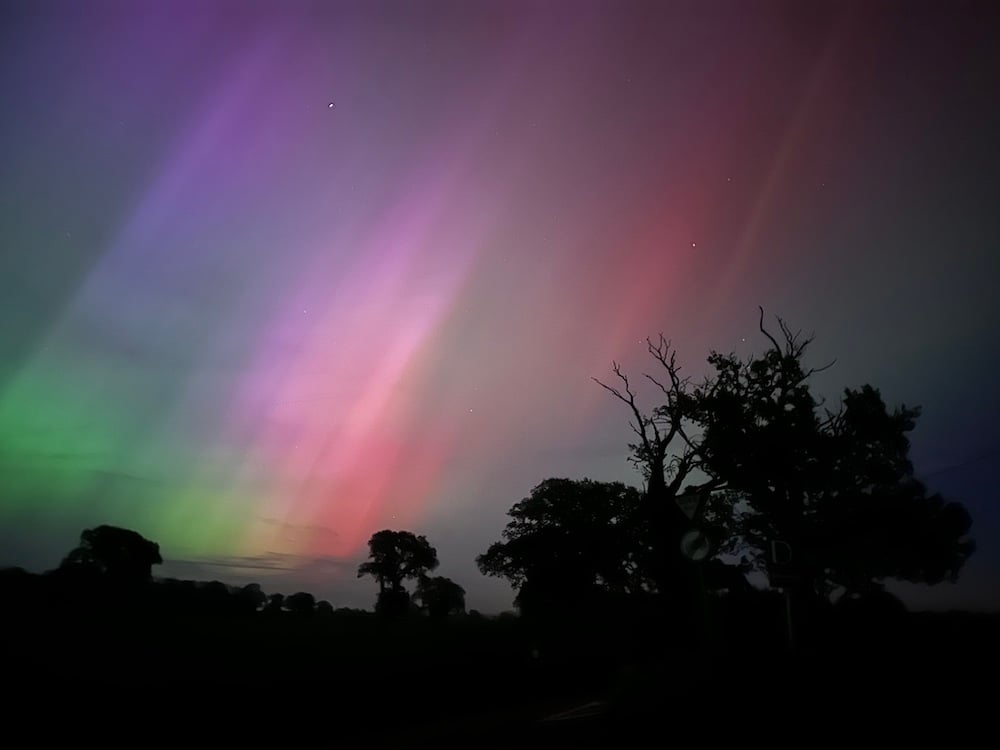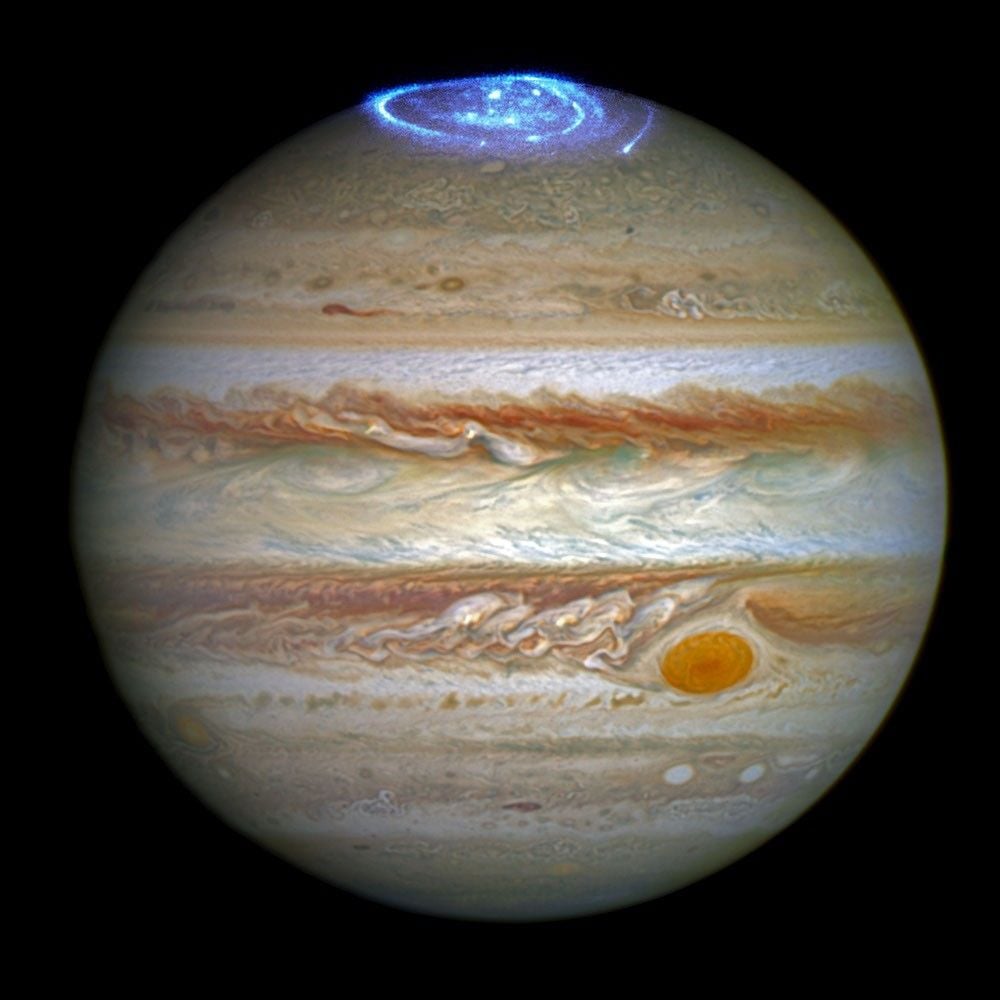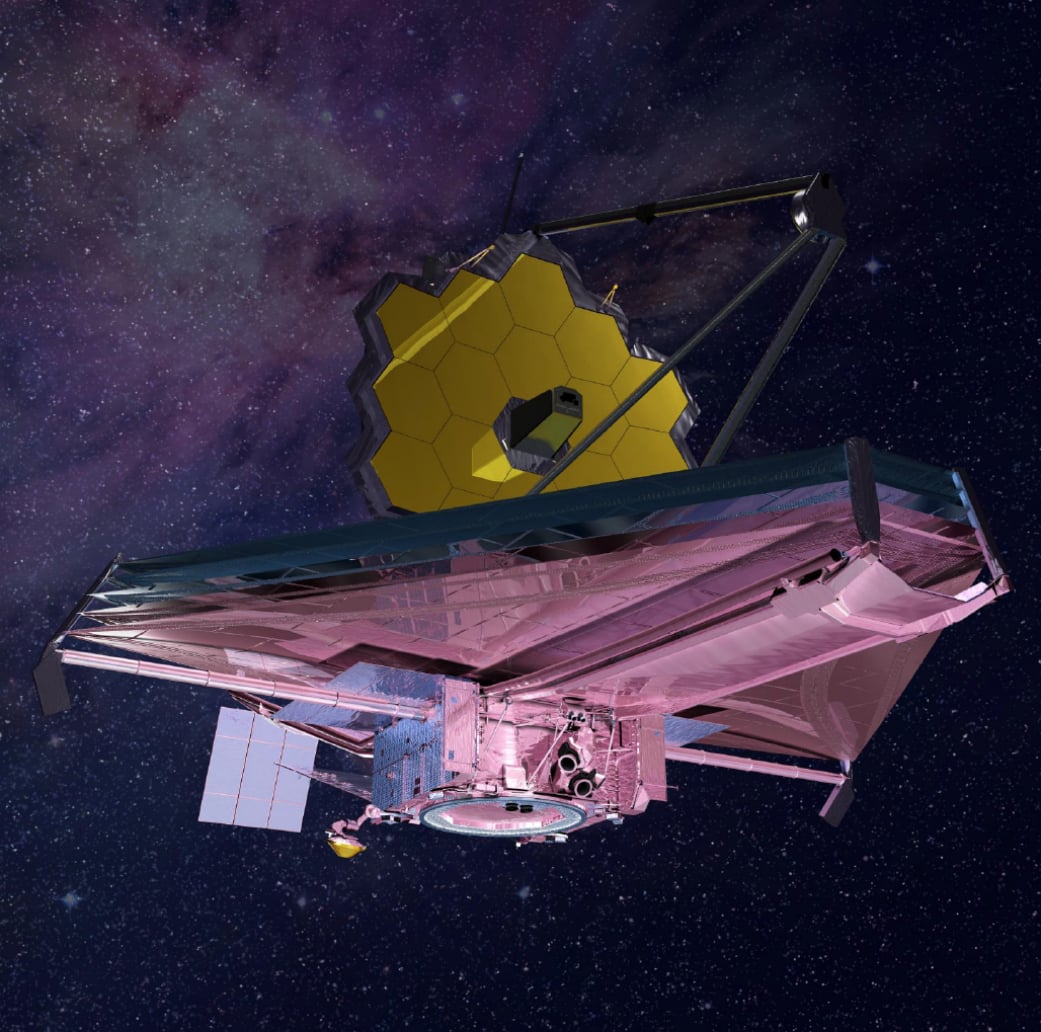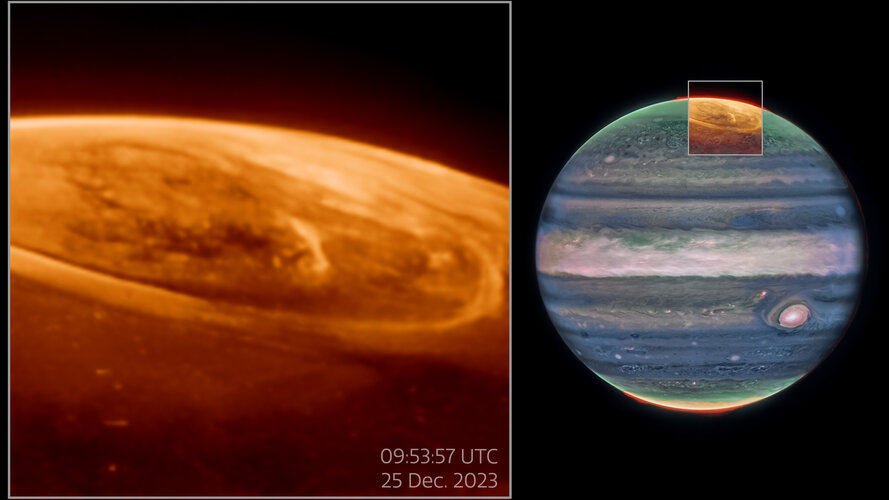Auroral displays are breathtaking light shows that can be seen across high latitude skies, created by the interaction between the solar wind and a planet's magnetic field. High-energy particles from the sun—mostly electrons and protons—hurtle through space until captured by magnetic field lines, which funnel them toward the poles. There, these charged particles collide dramatically with atmospheric molecules, transferring energy that excites atoms and molecules to higher states. As these excited particles return to their ground state, they release their excess energy as the shimmering curtains of coloured light we know as aurora.
 Stunning northern lights display
Stunning northern lights display
It's not just Earth that enjoys auroral displays though, in particular, Jupiter's auroras dwarf Earth's aurora creating vast light shows that could swallow our entire planet. Powered by the gas giant's colossal magnetic field—14 times stronger than Earth's—these polar displays glow with an intensity never seen on Earth and never fully disappear. Unlike Earth's auroras, which depend primarily on solar wind, Jupiter generates much of its auroral energy internally through its rapid 10-hour rotation and interactions with its volcanic moon Io, which pumps tons of sulphur and oxygen into Jupiter's magnetosphere daily.
 Auroral displays on Jupiter captured by the Hubble Space Telescope in 2016 (Credit : NASA)
Auroral displays on Jupiter captured by the Hubble Space Telescope in 2016 (Credit : NASA)
Recent observations by the James Webb Space Telescope's (JWST) Near-InfraRed Camera on Christmas Day 2023, led by Jonathan Nichols from the University of Leicester, have leveraged the telescope's exceptional sensitivity to capture the rapidly changing Jovian auroral features with unprecedented detail, revealing new insights into these massive electromagnetic storms.
"What a Christmas present it was – it just blew me away! We wanted to see how quickly the auroras change, expecting it to fade in and out ponderously, perhaps over a quarter of an hour or so. Instead we observed the whole auroral region fizzing and popping with light, sometimes varying by the second." - Jonathan Nichols, University of Leicester.
Further observations were completed using the Hubble Space Telescope and together, the observations of Jupiter's auroras revealed that emissions from the trihydrogen ion (H3+) fluctuate much more dramatically than previously thought, offering new insights into the heating and cooling mechanisms of Jupiter's upper atmosphere.
However, the team encountered a mystery: the brightest infrared emissions captured by JWST had no corresponding features in Hubble's ultraviolet imagery. This suggests an apparently impossible phenomenon—what Nichols describes as "a tempest of drizzle," where large quantities of very low-energy particles somehow create intense auroral brightness visible only to JWST, leaving researchers baffled about the underlying mechanisms that could produce such contradictory observations.
 Artist impression of the James Webb Space Telescope
Artist impression of the James Webb Space Telescope
The team acknowledge more work is required to investigate the discrepancy between the observations. They now hope to use additional JWST sessions to compare with NASA's Juno spacecraft data, hoping to solve the mystery.. These findings could prove valuable for the European Space Agency's Juice mission—which is currently traveling to Jupiter—to examine the gas giant's auroras using seven scientific instruments, including two imaging systems. They hope the study will improve our understanding of the interactions between Jupiter's magnetic field, atmosphere, and the charged particles from its moons, particularly Io.
Source :Webb reveals new details and mysteries in Jupiter's aurora
 Universe Today
Universe Today
